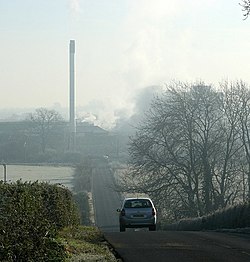
Fulton is a city in the western part of Oswego County, New York, United States. The population was 11,389 as of the 2020 census. The city is named after Robert Fulton, the inventor of the steamboat.

Nestlé S.A. is a Swiss multinational food and drink processing conglomerate corporation headquartered in Vevey, Switzerland. It has been the largest publicly held food company in the world, measured by revenue and other metrics, since 2014. It ranked No. 64 on the Fortune Global 500 in 2017. In 2023, the company was ranked 50th in the Forbes Global 2000.

Trowbridge is the county town of Wiltshire, England; situated on the River Biss in the west of the county, close to the border with Somerset. The town lies 8 miles (13 km) south-east of Bath, 31 miles (50 km) south-west of Swindon and 20 miles (32 km) south-east of Bristol. The parish had a population of 37,169 in 2021.

Shreddies are a breakfast cereal marketed in Canada, the United Kingdom and Ireland. It was first produced in Canada in 1939 by Nabisco. The Shreddies brand is held by Post Consumer Brands in Canada, and Nestlé in the United Kingdom and Ireland.

Shredded wheat is a breakfast cereal made from whole wheat formed into pillow-shaped biscuits. It is commonly available in three sizes: original, bite-sized and miniature. Both smaller sizes are available in a frosted variety, which has one side coated with sugar and usually gelatin. Some manufacturers have produced "filled" versions of the bite-size cereal containing a raisin at the center, or apricot, blueberry, raspberry, cherry, cranberry or golden syrup filling.
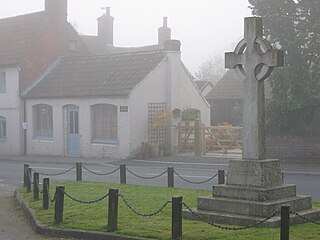
Bratton is a village and civil parish in the English county of Wiltshire, about 2.5 miles (4 km) east of Westbury. The village lies under the northern slope of Salisbury Plain, on the B3098 Westbury – Market Lavington road.
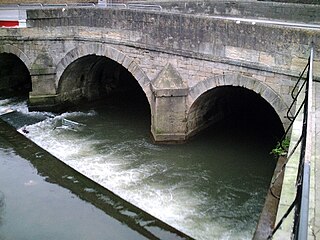
The River Biss is a small river in Wiltshire, England and is a tributary of the Bristol Avon. The name is of uncertain origin; it is claimed that the word is from the Old Norse bisa, meaning "to strive".
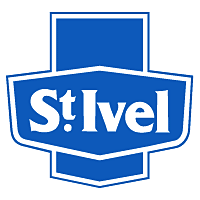
St Ivel is a brand of dairy products in the United Kingdom, introduced in 1901 by the Yeovil-based dairy company Aplin & Barrett, for use on a range of their products. The company was taken over by Unigate Dairy Company in 1960. Most production sites were in the south west of England and some in Wales. Most of its brands were bought in the beginning of the 2000s by Dairy Crest, following a severe decline in doorstep deliveries of milk – previously a major area of business for Unigate. In 2020 the St Ivel brand was still used for buttermilk produced by Dairy Crest's successor Müller.
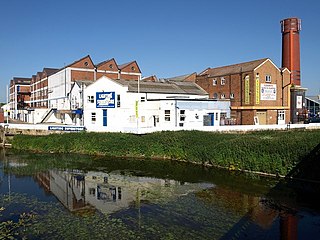
United Dairies was a United Kingdom-based creamery, milk bottling and distribution company. The company was formed in 1915 and merged to form Unigate in 1959.

Hilperton is a village and civil parish in Wiltshire, England. The village is separated by a few fields from the northeastern edge of the town of Trowbridge and is approximately 1.3 miles (2.1 km) from Trowbridge town centre.

Staverton is a village and civil parish in the west of the English county of Wiltshire, about 1.75 miles (2.82 km) north of the centre of Trowbridge and 3 miles (4.8 km) east of Bradford on Avon.

The Shires Shopping Centre is the central, covered shopping centre in Trowbridge, Wiltshire, England. The centre incorporates the county town's main museum and has a 1,000-space car park. As of 2009, approximately 120,000 shoppers visited the centre each week.
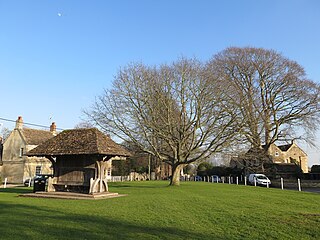
Holt is a village and civil parish in the west of Wiltshire, England, about 2.5 miles (4 km) north-east of Bradford-on-Avon and 3 miles (5 km) south-west of Melksham.

Dennington is a town in the Western District of Victoria, Australia. The town is located in the City of Warrnambool local government area, 270 kilometres (170 mi) south-west of the state capital, Melbourne and 5 kilometres (3.1 mi) north-west of the regional centre of Warrnambool. At the 2016 census, Dennington had a population of 1,907.

Holt Junction was a railway station which served the village of Holt, Wiltshire, England between 1861 and 1966. It stood on the Wessex Main Line at its junction with the western end of the Devizes branch.
Bowyers was a company known for the manufacture of meat products, including a brand of sausages, which was based in Trowbridge, Wiltshire, England. The company was acquired by Northern Foods in 1985, and passed through two other owners until the Trowbridge factory was closed in 2007. The brand is used by Addo Food Group for ranges of sausage rolls, pork pies and quiches.
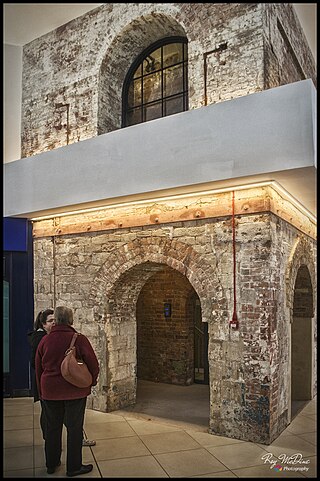
Trowbridge Museum, in the town of Trowbridge, Wiltshire, England, is a centre for the history of West of England cloth production.
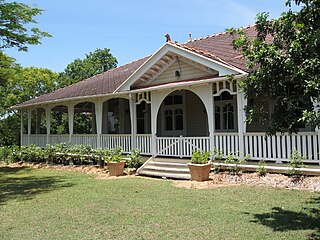
Inverness is a heritage-listed detached house at 58 Fulham Street, Toogoolawah, Somerset Region, Queensland, Australia. It was designed by John Henry Burley and built in 1917 by D A Menzies. It was added to the Queensland Heritage Register on 21 October 1992.

Unilever Gloucester is a large food manufacturing site in the north-east of Gloucester, England, that produces all of the makes of Unilever ice cream for the UK.

Peter's Chocolate was a Swiss chocolate producer founded in 1867 by Daniel Peter in Vevey. It is notably the company who produced the first successful milk chocolate bar. It merged with Kohler in 1904, with Cailler in 1911, and was bought by Nestlé in 1929. The brand was purchased by Cargill in 2002. Peter's Chocolate was recurrently advertised with the image of a traditionally dressed man waving a chocolate bar, often with an Alpine scenery.
